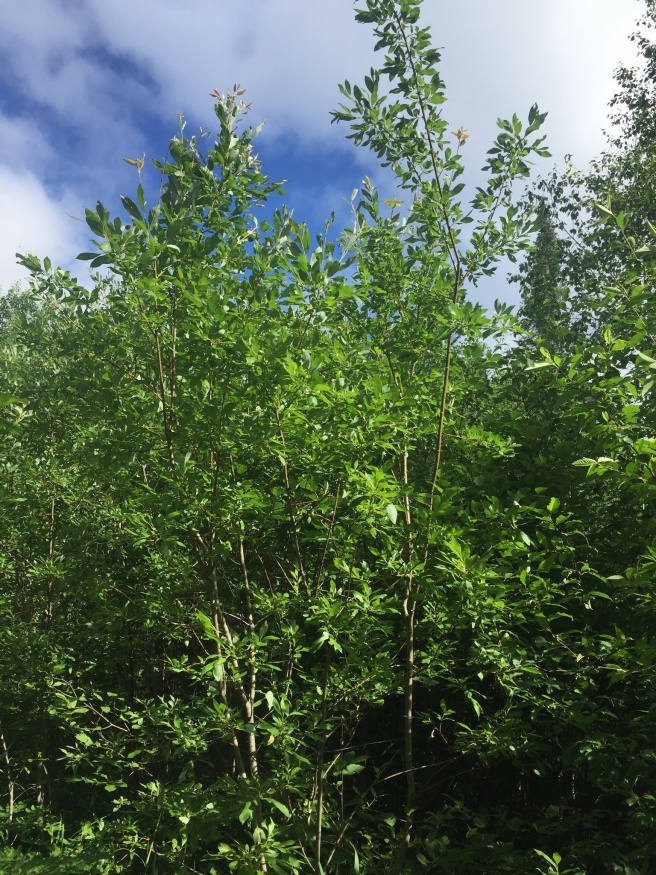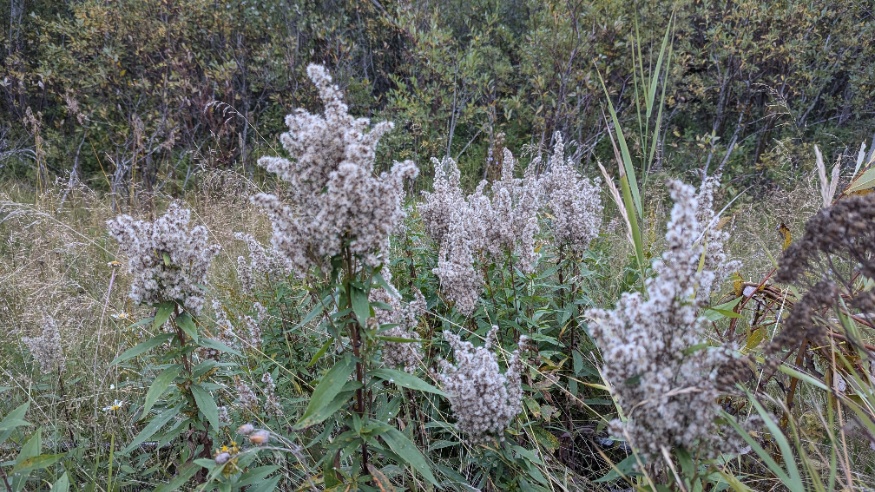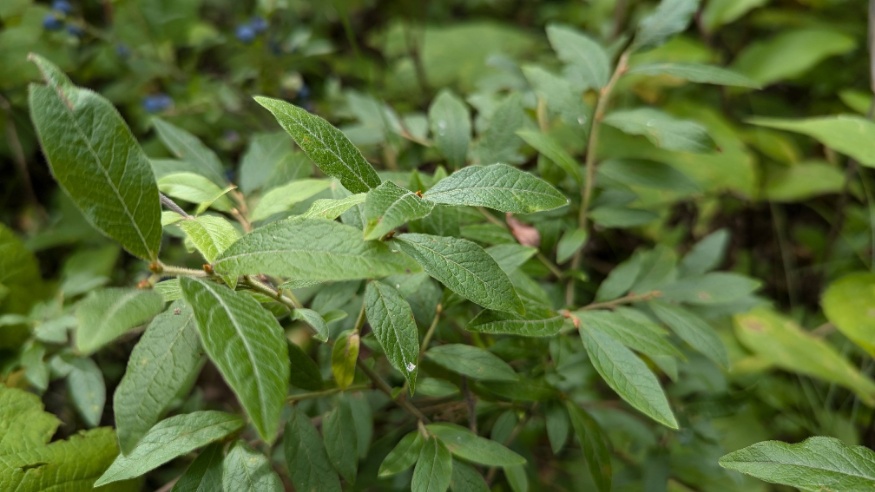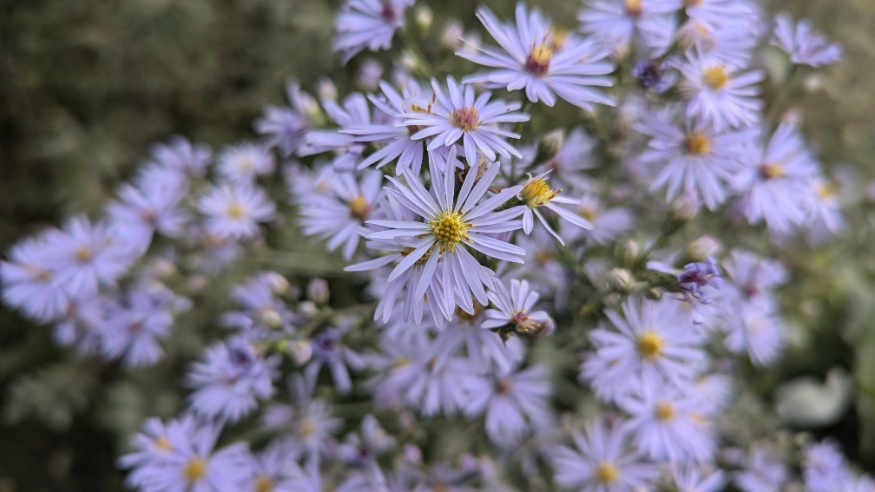Prairie Willow

Family: Salicaceae Native to: Eastern North America, Interior North America
Hardy to zone: 4
Natural habitat: prairies, barren or disturbed ground, rocky slopes
Shapes: multi-stemmed, clump
Height: 4-12ft
Growth rate: fast
Tolerances: salt
Insects: aphids, scale, borers
Diseases: canker, leaf blight
Light: full sun
Soil: moist and fertile, well drained, tolerates heavy clay, drought tolerant, alkaline ph
Reproduction type: dioecious
The prairie willow is a shrub to small tree native to central and Eastern North America. With a suckering habit, the shrub forms thickets on sandy, dry, or disturbed areas such as roadsides or rocky bluffs. Not common in landscaping, however it can be used in mound or naturalized plantings.

The foliage is linear or lanceolate in shape. Colour is grey-green to blue-green, darker on top and silvery on the bottom. dark brown thin stems are covered with whitish hairs. Male or female catkins exist on separate plants and can add some visual interest in early to mid spring.
References
Canadensys. (2020.). Salix humilis Marshall. [Data set] Canadensys. Retrieved from https://data.canadensys.net/vascan/taxon/9118?lang=en
Lady Bird Johnson Wildflower Center. (2016). Salix humilis. Retrieved from https://www.wildflower.org/plants/result.php?id_plant=sahu2
The Morton Arboretum. (n.d.). Prairie willow. Retrieved from https://www.mortonarb.org/trees-plants/search-trees/search-all-trees-and-plants


